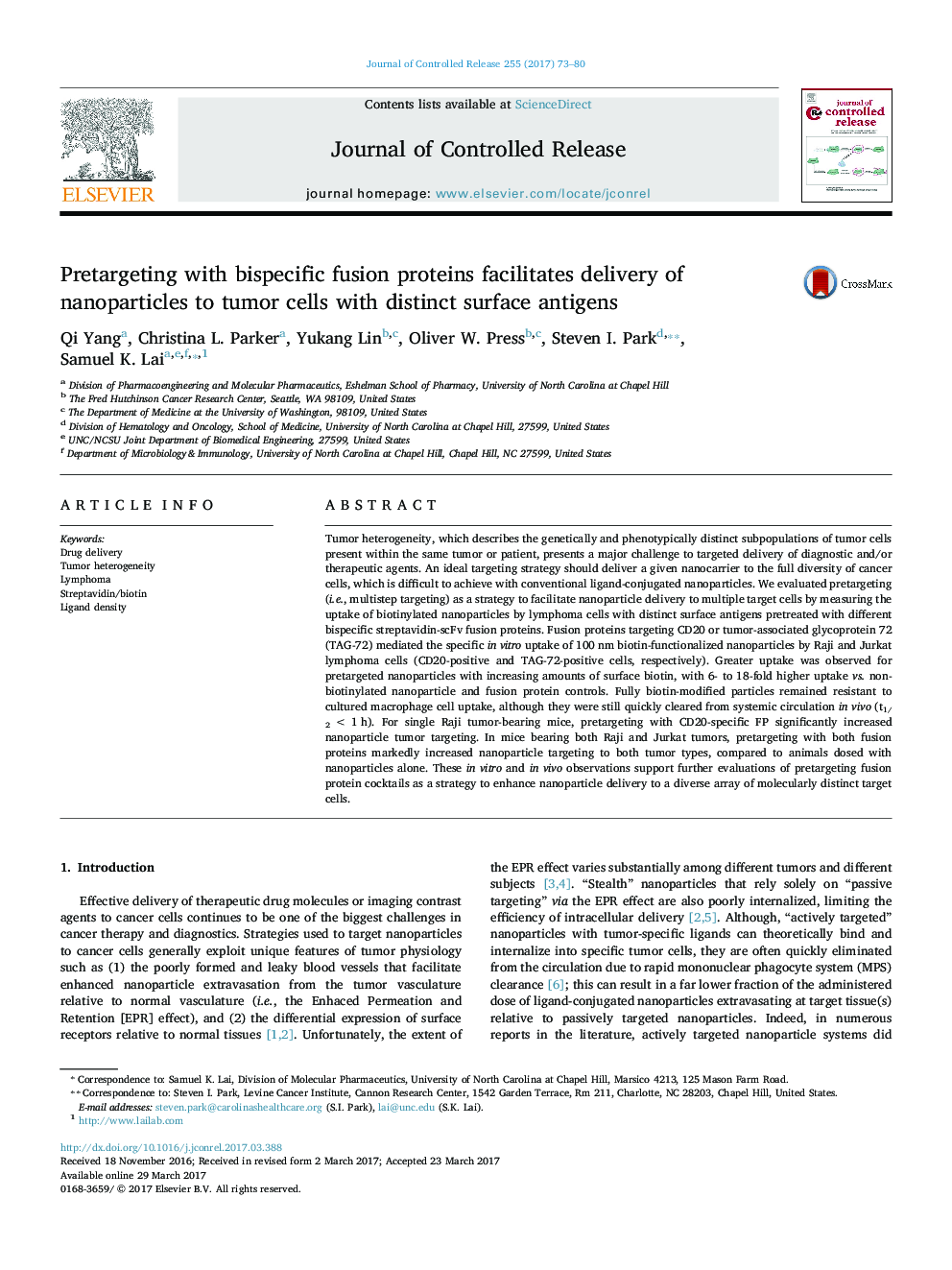| کد مقاله | کد نشریه | سال انتشار | مقاله انگلیسی | نسخه تمام متن |
|---|---|---|---|---|
| 5433530 | 1508995 | 2017 | 8 صفحه PDF | دانلود رایگان |

Tumor heterogeneity, which describes the genetically and phenotypically distinct subpopulations of tumor cells present within the same tumor or patient, presents a major challenge to targeted delivery of diagnostic and/or therapeutic agents. An ideal targeting strategy should deliver a given nanocarrier to the full diversity of cancer cells, which is difficult to achieve with conventional ligand-conjugated nanoparticles. We evaluated pretargeting (i.e., multistep targeting) as a strategy to facilitate nanoparticle delivery to multiple target cells by measuring the uptake of biotinylated nanoparticles by lymphoma cells with distinct surface antigens pretreated with different bispecific streptavidin-scFv fusion proteins. Fusion proteins targeting CD20 or tumor-associated glycoprotein 72 (TAG-72) mediated the specific in vitro uptake of 100 nm biotin-functionalized nanoparticles by Raji and Jurkat lymphoma cells (CD20-positive and TAG-72-positive cells, respectively). Greater uptake was observed for pretargeted nanoparticles with increasing amounts of surface biotin, with 6- to 18-fold higher uptake vs. non-biotinylated nanoparticle and fusion protein controls. Fully biotin-modified particles remained resistant to cultured macrophage cell uptake, although they were still quickly cleared from systemic circulation in vivo (t1/2 < 1 h). For single Raji tumor-bearing mice, pretargeting with CD20-specific FP significantly increased nanoparticle tumor targeting. In mice bearing both Raji and Jurkat tumors, pretargeting with both fusion proteins markedly increased nanoparticle targeting to both tumor types, compared to animals dosed with nanoparticles alone. These in vitro and in vivo observations support further evaluations of pretargeting fusion protein cocktails as a strategy to enhance nanoparticle delivery to a diverse array of molecularly distinct target cells.
Figure optionsDownload high-quality image (203 K)Download as PowerPoint slide
Journal: Journal of Controlled Release - Volume 255, 10 June 2017, Pages 73–80